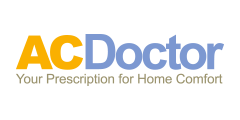 If you’re like most of us, you probably never think about the air you’re breathing inside your home— unless you have a sick child with asthma or an elderly parent who has trouble breathing.
If you’re like most of us, you probably never think about the air you’re breathing inside your home— unless you have a sick child with asthma or an elderly parent who has trouble breathing.
Maybe someone in the house smokes. You may do a lot of cooking on an unvented stove.
But even if those common irritants don’t exist in your home, chances are you’re exposed to ‘sick’ levels of pollutants.
According to the California Air Resources Board (California, where air pollution first became a household word: http://www.arb.ca.gov/research/indoor/rediap.htm), here are just a few of the potential sources and their possible health effects:
* tobacco smoke: bronchitis and pneumonia in children, emphysema and lung cancer in adults;
* carbon monoxide from unvented appliances: headache, nausea and angina (fatal at high concentrations);
* organic chemicals from household cleaning agents, air fresheners (get the irony?), dry-cleaning, pesticides, paints . . . we’ll stop here for the sake of space: liver and kidney damage, various types of cancer;
* formaldehyde from plywood, particle board, wallpaper, furniture: headaches, cancer;
* asbestos from damaged insulation, fireproofing and accoustic ceilings: lung cancer, asbestosis;
* lead from lead paint or house dust: nerve and brain damage in children; kidney damage and anemia;
* radon from soil and groundwater: lung cancer. 
All right, already! Where’s the good news?
The good news is, you can protect yourself first, by minimizing the pollutants; and second, with proper ventilation and air filtration. (See our page on the topic: http://www.acdoctor.com/get-educated/be-comfortable/indoor-air-quality/)
Here are some tips to help you address the source issue:
1. Use cleaning agents, sprays, paints and glues outside if possible.
2. Choose safer, natural products such as baking soda rather than cleaning compounds.
3. Avoid aerosol sprays, which are hard to control.
4. Don’t smoke.
5. Make sure all appliances, wood stoves and fireplaces are vented.
6. Avoid plywood and particle board.
7. Open windows and doors when weather permits.
As for filtration, check out our service page on the topic: http://www.acdoctor.com/get-educated/be-comfortable/indoor-air-quality/air-filtration/ While you can’t trap all indoor air pollutants, you can zap the more dangerous ones. And don’t forget about a radon detector.
After you’ve read this and taken those steps: Breathe easy. You’re aleady on your way to a healthier indoor environment. ')}
